Top Ten Pet Birds: A Guide for Avian Enthusiasts
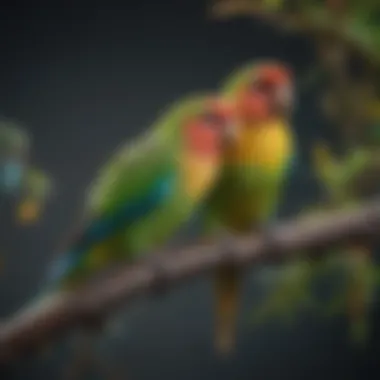
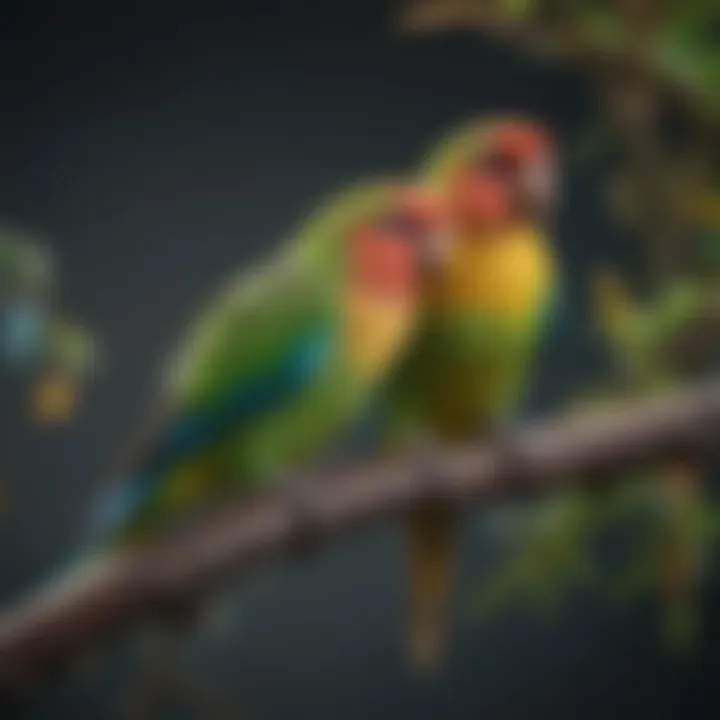
Intro
Pet birds hold a special place in the world of companionship, offering a unique blend of beauty, intelligence, and charm. As avian enthusiasts delve into the realm of bird ownership, understanding the nuances of care becomes paramount. The diverse range of available species presents both an exciting opportunity and a responsibility. This article will examine the best pet birds for enthusiasts, equipping them with essential knowledge to foster a nurturing environment for these remarkable creatures.
The following sections will cover various aspects that contribute to the well-being and happiness of pet birds, including care tips, behavioral insights, nutrition guides, wellness and health, and enriching activities. Each category will provide valuable information to help new and seasoned bird owners enhance their experiences with their feathered friends.
Care Tips
The foundation of a happy and healthy pet bird lies in proper care. By establishing routines and creating a suitable environment, owners can ensure their birds' well-being.
Daily Care Routines
Daily routines should encompass feeding, interaction, and observation. Birds thrive on consistency, so it is crucial to feed them at the same times every day. Engaging with them through conversation and play fosters emotional bonds, while vigilant observation helps detect any changes in behavior or health.
Cage Setup and Maintenance
Setting up the cage is one of the first steps in ensuring a comfortable home for pet birds. The cage needs to be spacious enough to allow for free movement. Perches, swings, and toys should be well-distributed, providing exploration opportunities. Periodic maintenance, like checking for wear and tear, is essential to keep the environment safe.
Hygiene and Cleaning Practices
Maintaining a clean living space is vital for the health of pet birds. Weekly cleaning of the cage, including the removal of droppings and uneaten food, prevents disease. Using bird-safe cleaning products ensures that no harmful chemicals affect their health.
Seasonal Care Adjustments
Different seasons can affect birds’ health and behavior. During colder months, ensure they have adequate warmth. In hot climates, provide ample water and shade. Recognizing these seasonal needs can significantly enhance their comfort.
Behavioral Insights
Understanding bird behavior is crucial for fostering a positive human-animal connection. Birds communicate their needs and emotions through various signals.
Understanding Bird Body Language
Birds express themselves through body language. Observing their posture, wing position, and vocalizations can provide insight into their mood. A relaxed bird will often stand with feathers sleek, while a puffed-up bird might be agitated.
Common Behavioral Issues and Solutions
Some birds may exhibit behavioral issues, such as excessive screaming or feather plucking. These can arise from boredom or stress. Providing a stimulating environment and regular engagement can often remedy these concerns.
Positive Reinforcement Techniques
Training birds with positive reinforcement fosters a trusting relationship. Using treats or praise encourages good behavior, making training a more enjoyable experience for both bird and owner.
Social Interaction Needs
Birds are social by nature, and they thrive on interaction, whether with humans or other birds. Daily socialization can help prevent loneliness and promote overall well-being.
Nutrition Guides
Diet is a crucial aspect of bird care that influences their health.
Essential Diet Components
A balanced diet includes a variety of seeds, pellets, fruits, and vegetables. Each species may have different dietary needs, so it's essential to research the requirements specific to the bird you own.
Safe and Toxic Foods
Some foods are harmful to birds. For example, avocado, chocolate, and caffeine should be avoided. Awareness of safe and toxic foods helps prevent accidental ingestion.
Supplements and Treats
Occasionally, birds may benefit from supplements, especially if their diet lacks specific nutrients. Healthy treats, like small pieces of fruit or nuts, can enhance their diet and strengthen their bond with their owner.
Feeding Strategies for Different Species
Feeding strategies can vary. For example, larger birds may require larger grains and fruits, whereas smaller birds might prefer finely milled food. Paying attention to species-specific needs is essential for proper nutrition.
Wellness and Health
Regular health checks can make a significant difference in a bird's life.
Routine Health Checkups
Annual visits to an avian veterinarian help monitor health and catch any potential issues early on. Routine examinations, including weight checks and feather assessments, are valuable.
Identifying Symptoms of Illness
Birds can be masters of disguise when it comes to illness. Understanding symptoms, like changes in appetite or activity levels, is crucial for early identification and intervention.
Preventative Care and Vaccinations
Preventative care, including vaccinations, shields birds against common diseases. Keeping up with recommended vet visits ensures your feathered friend stays healthy.
Mental and Emotional Well-being
Just like physical health, mental health is vital. Providing social interaction, stimulation, and a varied environment contributes greatly to a bird's overall mental well-being.
Enriching Activities
Engaging birds in enriching activities can stimulate their minds.
Toys and Playtime Ideas
Toys are essential for mental stimulation. Introducing various types of toys, such as chewable, hanging, or puzzle types, keeps birds engaged and satisfied.
Training and Tricks
Teaching birds tricks not only entertains but also enhances bonding. Simple commands, like "step up" or "wave," can be fun and educational.
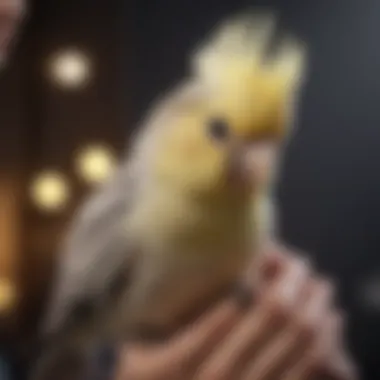
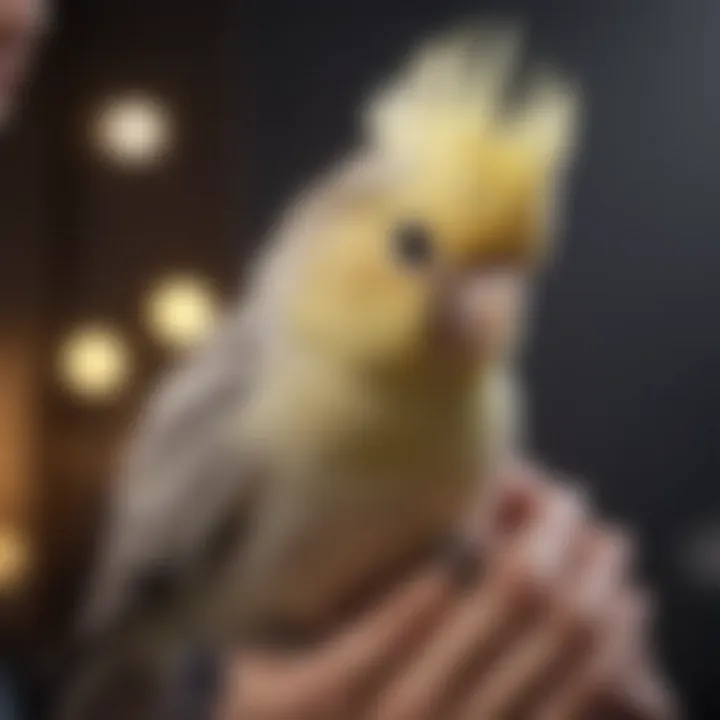
Outdoor Activities and Interaction
Supervised outdoor time can offer birds a fresh perspective and valuable exercise. When taken to new environments safely, they can experience nature in a new way.
DIY Projects for Mental Stimulation
Creating DIY toys can be a fun and rewarding activity. Simple projects using safe materials can provide endless entertainment and stimulate creative instincts in birds.
Engaging with birds through structured care, understanding behavior, and providing enriching activities contributes to harmonious relationships and happier pet birds.
Prologue to Pet Birds
Keeping pet birds has grown increasingly popular among enthusiasts. This section explores the significance of understanding pet birds and how they can enhance one’s life. Choosing to have a bird as a pet is not only a decision about companionship but also one that involves a commitment to their well-being and understanding their needs.
The Appeal of Keeping Pet Birds
Birds captivate many people for various reasons. Their beauty, intelligence, and vocal abilities make them unique pets. Observing their behavior can be both fascinating and therapeutic. Birds often exhibit playful and curious traits that create lively atmospheres in homes. Additionally, they require less space than many other pets, making them ideal for people living in smaller areas. Feeding and caring for pet birds can also be less intensive than for dogs or cats, attracting busy individuals or families looking for a manageable companion.
Understanding Bird Behavior
Understanding bird behavior is crucial for any potential bird owner. Birds communicate through vocalizations, body language, and behaviors. Recognizing these signals helps owners build a bond with their pets. Each species has its specific behaviors that owners should study. For example, cockatiels often demonstrate affections by singing or preening their owners. Parakeets are known for their social inclinations, thriving in company. Understanding the essentials of bird behavior promotes a positive relationship and results in a healthier and happier pet.
The Significance of Species Selection
Choosing the right bird species is paramount for a successful pet-owning experience. Not all birds suit every lifestyle. For example, larger parrots like African Grey require substantial attention, companionship, and time investment. On the other hand, finches and canaries are more independent and might be better for people with a busier lifestyle. This section emphasizes the importance of selecting a bird that aligns with one’s lifestyle, available space, and commitment level. Ensuring a match can lead to a more rewarding and enjoyable pet ownership experience.
"Choosing the right species can help avoid common challenges and enhance the relationship between owner and bird."
Overall, this overview emphasizes that keeping pet birds can be a wonderfully enriching experience when approached with knowledge and care.
Factors to Consider When Choosing a Pet Bird
Choosing a pet bird involves careful consideration of various factors. Each bird species has different requirements and characteristics that can directly influence the overall experience of being a bird owner. Understanding these elements is crucial in selecting a companion that aligns with your lifestyle and home environment.
Space and Environment Requirements
Birds require adequate space to thrive. The size of the cage significantly impacts their well-being. For larger species, such as African Grey Parrots or Amazon Parrots, a spacious aviary is essential. A good rule of thumb is to choose a cage that allows the bird to fully extend its wings without hindrance. Additionally, the positioning of the cage should be in an area of the home where the bird can observe activities without being isolated. Outside of the cage, birds benefit from a safe, designated play area to reduce boredom and promote physical exercise.
Dietary Needs and Nutrition
Nutrition is vital for a bird's health. Each species has specific dietary requirements that need to be met for optimal wellness. For example, a diet for a cockatiel typically includes pellets, seeds, and fresh vegetables. Conversely, a finch may thrive on a different blend. Fresh water should always be available, and it is important to avoid toxic foods such as chocolate or avocado. Understanding these dietary nuances ensures a longer, healthier life for your bird.
Social Interaction and Enrichment
Birds are social creatures and need regular interaction. Many species develop deep bonds with their owners. For example, lovebirds often form strong pair bonds and can develop behavioral issues if neglected. Social interaction can come through directed playtime, training sessions, or simply talking to the bird. Enrichment activities, such as foraging toys or mirrors, can stimulate their mental health and prevent boredom. Ensuring a well-rounded social experience is integral to a pet bird's happiness and emotional stability.
"The right environment, diet, and social interaction can drastically improve a pet bird's quality of life."
Parakeets (Budgerigars)
Parakeets, commonly known as budgerigars or "budgies," hold a significant place in the realm of pet birds. Their popularity stems from several appealing attributes, including their vibrant colors, engaging personalities, and relatively manageable care requirements. Budgies are often seen as an excellent choice for both novice bird owners and seasoned enthusiasts alike. They offer a dynamic combination of social interaction and ease of care, making them suitable companions for various lifestyles. In this section, we will explore the characteristics, care, and behavioral traits of parakeets, ensuring that potential owners are thoroughly informed.
Overview and Characteristics
Budgerigars are small parrots that typically measure around 7 inches in length, characterized by their distinct, long tail feathers and colorful plumage. They are native to Australia and were first domesticated in the mid-19th century. Their availability in various colors, such as green, blue, yellow, and white, adds to their allure.
Budgies are highly social animals that thrive in groups, both in the wild and domestically. They display a friendly demeanor, often forming strong bonds with their owners. Many individuals appreciate the adaptability of budgies to different living environments, as they can adjust well to both spacious aviaries and smaller cages.
Care and Maintenance
Caring for parakeets requires some commitment but is generally straightforward. Basic requirements include:
- Cage Size: Provide a spacious cage for the bird to move around comfortably. A minimum dimension of 18" x 18" x 24" is recommended for one budgie.
- Diet: A balanced diet should consist of high-quality pellets, fresh fruits, and leafy greens. Provide occasional treats like millet or occasional seeds.
- Social Interaction: Budgies need regular interaction. Spend time with your bird and consider having more than one to prevent loneliness.
- Health Care: Regular veterinary check-ups are essential to monitor health. Look out for signs of illness, such as changes in appetite or behavior.
Behavioral Traits
Budgies showcase a range of interesting and engaging behaviors. These include:
- Vocalizations: Budgerigars are known for their chirping, and many can mimic sounds or words. They often express themselves vocally and enjoy chatting with their human companions.
- Playfulness: A budgie thrives in an environment with toys and activities. They enjoy climbing and exploring, so enriching their cage with swings, perches, and toys can enhance their happiness.
- Social Behavior: Budgies are affectionate and may display behaviors like preening each other when in pairs. They can get lonely when alone, so multiple birds can be beneficial for their mental well-being.
"Budgies are among the most versatile and entertaining pet birds, offering companionship and joy to their owners."
In summary, parakeets, or budgerigars, serve as an excellent option for potential bird owners looking for a sociable and visually captivating pet. By understanding their traits and care requirements, enthusiasts can ensure a harmonious relationship with these appealing avian companions.
Cockatiels
Cockatiels hold a special place in the world of pet birds, making them a popular choice for many enthusiasts. They are known for their friendly and playful nature, which often endears them to their owners. This section will delve into the aspects that make cockatiels a great companion, focusing on their varieties, emotional needs, and health considerations. By understanding these factors, potential owners can make informed decisions about bringing a cockatiel into their lives.
Common Varieties and Appearance
Cockatiels come in various colors and patterns beyond the familiar grey. While the standard grey cockatiel is well-known, other mutations include the lutino, which has striking yellow feathers, and the pied variety, which displays patches of different colors. Each variety has unique traits that enhance their appeal.
Their physical appearance is distinguished by a crest on top of their head, which they can raise or lower depending on their mood. Additionally, cockatiels have vibrant cheek patches that range in color, which adds to their charm. The size is manageable, typically about 12 to 14 inches in length, making them suitable for most households. Owners often find joy in identifying the variations and selecting a bird that aligns with their aesthetic preferences.
Emotional and Social Needs
Cockatiels are social creatures that thrive on interaction. Unlike some other pet birds, they require consistent attention and companionship from their owners. Daily interaction helps to prevent boredom and encourages a healthy bond. They are known to form strong attachments to their caregivers, often showing affection in the form of preening or soft vocalizations.
In terms of social dynamics, it is often recommended to have at least two cockatiels if the owner cannot devote enough time to one. This duo can keep each other company and reduce feelings of loneliness. Additionally, it is essential to engage them in activities that stimulate their minds and satisfy their curiosity. Toys, perches, and even simple games can enhance their living experience and well-being.
Health Considerations
Owning a cockatiel requires attention to health aspects to ensure a long and happy life. Regular veterinary check-ups are critical, as these birds can be prone to health issues such as respiratory diseases or feather plucking. A nutritious diet is also crucial. A balanced feed that includes pellets, fresh fruits, and vegetables helps maintain optimal health.
Signs of illness can be subtle; therefore, understanding their behavior is important. Changes in eating habits, vocalization, or overall activity should raise concern. Ensuring a clean living environment also contributes significantly to their health.
Proper care can prevent many health issues. Know the signs of distress or illness to act quickly.
African Grey Parrots


African Grey Parrots are among the most celebrated and sought-after pet birds due to their remarkable intellect and engaging personalities. They have earned a reputation not just for their beauty but also for their incredible cognitive abilities and nuanced communication skills. Owning an African Grey can be a rewarding experience for pet owners who are willing to invest time and effort into their care.
Cognitive Abilities
African Grey Parrots exhibit an impressive level of intelligence that is often comparable to that of a human child. They possess excellent problem-solving skills and can learn to perform complex tasks. Studies have shown that these birds can understand concepts like numbers and colors, making them one of the most intelligent avian species.
This high level of intelligence necessitates stimulating environments. Engaging their minds through toys, puzzles, and interactive play is crucial. Pet owners should provide activities that challenge their cognitive skills.
- Problem Solving: They can often figure out how to open cages or unlock food containers.
- Learning through Observation: These birds can mimic actions and routines they observe in their human companions.
- Adaptability: African Grey Parrots can learn new tricks or commands relatively quickly, showcasing their adaptive capabilities.
Communication Skills
One cannot discuss African Grey Parrots without mentioning their extraordinary communication skills. They are famous for their ability to mimic human speech, often with remarkable clarity. Some owners report their African Greys learning hundreds of words and phrases, integrating them into conversations.
Their understanding of language goes beyond mere mimicry. These birds often use words contextually, demonstrating a level of comprehension that few other species can achieve.
- Vocalization: African Grey Parrots have a diverse range of vocal sounds, which they use to express their feelings and needs.
- Social Interaction: They thrive on interaction and will often engage verbally with their owners, craving attention and companionship.
- Emotion Recognition: Many owners find that these birds can recognize emotions in speech, responding differently to happy or angry tones.
Care Challenges
While African Grey Parrots can be delightful companions, they also present unique care challenges. Their intelligence comes with a need for enrichment, requiring careful consideration of their social, emotional, and physical needs.
- Boredom: These birds can become bored easily, leading to behavioral issues such as feather plucking or aggressive behavior.
- Social Needs: African Grey Parrots are highly social creatures. They require regular interaction with their human owners or other birds to thrive. Isolation can lead to depression.
- Health Monitoring: Owners must be vigilant about their diet and health as African Greys can be prone to various health issues, including obesity if not properly managed.
In summary, African Grey Parrots are incredible companions that offer challenge and joy to their owners. Understanding their cognitive abilities, communication skills, and the challenges involved in their care are essential for prospective bird owners. A well-cared-for African Grey can become a part of the family, providing companionship and a rich emotional connection.
Amazon Parrots
Amazon parrots are distinguished not only by their vibrant plumage but also by their engaging personalities. These birds possess remarkable intelligence, making them highly sought-after companions among avian enthusiasts. Their social nature and ability to mimic human speech further enhance their appeal. However, prospective owners should be aware of the responsibilities that come with caring for these lively birds. Understanding their specific needs, from dietary requirements to socialization techniques, is essential to ensure their well-being and a harmonious relationship with their human caretakers.
Identifying Common Species
There are several species within the Amazon parrot family, each exhibiting unique traits and characteristics. Some of the well-known varieties include the Yellow-Naped Amazon, the Double Yellow-Headed Amazon, and the Blue-Fronted Amazon. Each species has its own distinct coloration and personality traits. For instance:
- Yellow-Naped Amazon: Recognized for its striking green feathers and yellow nape, this species is known for its exceptional mimicry skills.
- Double Yellow-Headed Amazon: Featuring a bright yellow head, this parrot is chatty and often forms strong bonds with its owner.
- Blue-Fronted Amazon: This species is lively and playful, known for its adaptability and curious nature.
When selecting an Amazon parrot, researching these common species can provide insight into the best fit for one’s lifestyle and preferences.
Socialization and Training Techniques
Socialization is crucial for Amazon parrots as it helps them develop strong relationships with their human handlers. Regular interaction can prevent behavioral issues such as biting or excessive squawking. Here are effective training techniques to implement:
- Positive Reinforcement: Rewarding desirable behaviors with treats or praise fosters a trusting bond and encourages repeat actions.
- Consistency: Establishing a routine for training sessions is beneficial; short, daily practices yield better results than longer, infrequent sessions.
- Variety in Training: Engaging the parrot with different activities, such as new tricks or games, keeps their interest piqued and helps maintain mental stimulation.
Incorporating these techniques into daily routines will aid in nurturing a well-adjusted and friendly companion.
Exercise Needs
Amazon parrots are active birds that require ample exercise to maintain their physical health and prevent obesity. They thrive in environments where they can stretch their wings, climb, and play. Consider the following exercise needs:
- Daily Flight Time: Allowing them to fly free in a safe, bird-proof space daily encourages physical activity and helps release pent-up energy.
- Toys and Climbing Structures: Providing various toys and climbing regions within their cages and play areas stimulates their curiosity and encourages active play.
- Supervised Outdoor Time: If feasible, outdoor exposure in a secure aviary or during walks with a harness can offer new sights, sounds, and experiences.
"A well-exercised parrot is a happy parrot, which is vital for their long-term health and well-being."
Lovebirds
The inclusion of Lovebirds in this article is essential for those looking to understand the unique qualities that define these small, colorful parrots. Their vibrant personalities and social nature make them appealing to numerous bird enthusiasts. Known for their affection and playful demeanor, Lovebirds are often considered ideal companions for individuals or families who want to experience the joys of aviculture. Importantly, understanding the specific needs and behaviors of Lovebirds ensures that prospective owners can provide a suitable environment for these birds to thrive. Their care may require specific considerations regarding socialization and diet, which will be addressed in this section.
Pair-Bonding Behavior
Lovebirds are known for their strong pair-bonding behavior. This trait can significantly impact their care and interaction. In the wild, Lovebirds naturally form monogamous pairs and exhibit deep bonds. When kept as pets, they may form strong attachments to their caregivers as well. This bond not only highlights the emotional capacity of these birds but also raises considerations for prospective owners. If not properly socialized, a Lovebird can become overly attached to one person, potentially leading to jealousy or anxiety if that person is absent. Therefore, it is vital to engage with the Lovebird regularly and avoid favoring one bird over another if you have multiple.
Modifications in Care Reflecting Social Needs
Given their highly social nature, modifications in care for Lovebirds should be a priority. They thrive in environments where they receive ample social interaction, whether from their human caregivers or other birds. Isolation can lead to unwanted behaviors, such as feather plucking or excessive vocalization. To cater to their social needs, consider housing Lovebirds in pairs or trios. This arrangement allows them to engage in natural behaviors, such as mutual preening and play. Moreover, enriching their environment with toys, perches, and foraging opportunities can stimulate their mental activity, promoting well-being.
Diet Preferences
Dietary preferences in Lovebirds also play a significant role in their health and happiness. A balanced diet for Lovebirds primarily consists of high-quality pellets, supplemented with fresh vegetables and fruits. Many Lovebirds enjoy leafy greens like kale and spinach, along with fruits such as apples and bananas. Owners must avoid feeding them avocados, chocolate, and caffeine as these foods are toxic to birds. Additionally, ensuring access to fresh water daily is crucial. Consider diversifying their diet regularly to keep the birds engaged and prevent boredom, which is essential for maintaining their overall health and vibrancy.
Understanding the unique traits of Lovebirds enables bird owners to create a fulfilling environment, which is beneficial for both the birds and their caretakers.
Canaries
Canaries are more than just cheerful songsters; they hold a special place in the hearts of bird enthusiasts. Their vibrant colors and delightful melodies make them a popular choice among pet bird owners. Understanding canaries enhances the experience of keeping them as companions, emphasizing their care requirements, unique traits, and social aspects.
Species Variations and Choice
Canaries come in various species, each with distinct characteristics. The most common is the American Singer, known for its melodious voice. The Gloster is another favorite, featuring a distinctive crest that adds visual appeal.
Owning a canary provides an interesting choice in terms of color and song. Some owners may prefer the Lizard canary, known for its unique feather patterns, while others may be drawn to the Yellow, considered the traditional color. Choosing a specific species often depends on the owner’s preferences regarding appearance and sound.
These variations suggest the importance of researching individual species before making a selection. Understanding their behaviors can also prevent potential issues in companionship or care.
Acoustic Qualities and Health
Canaries are renowned for their singing abilities. Their vocalizations range from soft chirps to complex melodies, providing both entertainment and a soothing atmosphere at home. Regular singing often indicates a healthy bird, while a decline in vocal activity could signal health issues.
Maintaining a canary's health involves proper nutrition and a stress-free environment. Diet influences their singing quality and overall wellness. A mix of pellets and fresh fruits contributes to their robust health, while avoiding excessive seed can prevent obesity.
Quote: "A singing canary is a sign of a happy companionship; their melodies reflect their inner well-being."
Housing and Habitat Needs
Canaries require an appropriate habitat to thrive. A spacious cage allows them to move freely and exercise, which is essential for their health. A minimum cage size of 24" x 18" x 18" is advisable, with horizontal bars for climbing.
The cage should be placed in a quiet area but still allow interaction with the family. Sunlight is significant for their well-being, so placing the cage where they can receive natural light while ensuring they are not in direct sunlight during the hottest parts of the day is important.
Providing toys and perches can also enhance their quality of life. Regular cleaning of the cage is necessary to maintain hygiene and protect their health. Overall, a well-thought-out housing situation contributes positively to a canary's happiness and longevity.
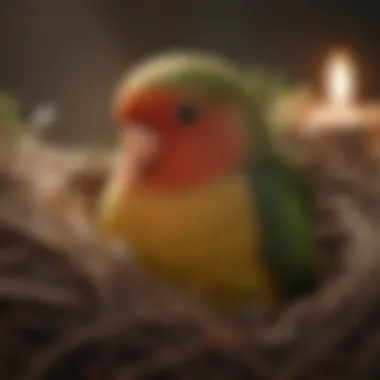
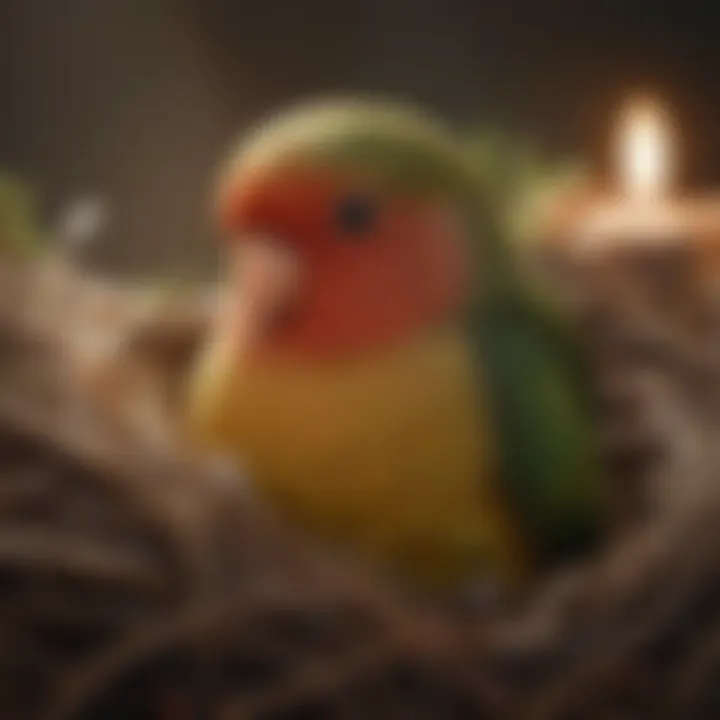
Finches
Finches represent a vibrant and diverse family of pet birds. Their lively nature and colorful plumage make them popular among bird enthusiasts. Understanding finches is essential for anyone considering them as companions. Not only do they bring joy through their songs and behaviors, but they also have specific needs that owners must acknowledge. When researching birds, finches warrant attention due to their engaging personalities and relatively simple care requirements.
Social Dynamics Among Species
Finches are social creatures. They enjoy the company of their own kind. This trait significantly influences their well-being. In a group setting, finches exhibit interesting social behaviors, such as grooming each other and playing. They are known to develop relationships within their flocks. This dynamic is essential when selecting finches for a household.
- Pairs vs. Groups: Keeping finches in pairs can benefit their social needs. However, larger groups can create a more dynamic and stimulating environment.
- Hierarchy and Pecking Order: Just like all animals, finches establish a hierarchy among themselves. Observing this behavior can guide owners in choosing the right number and types of finches for their home.
Grouping and Housing Recommendations
Creating the right habitat for finches is crucial. Finches prefer to live in spacious environments. A well-structured cage allows for flight and interaction.
- Cage Size: The cage should be large enough for birds to spread their wings and fly. A minimum of 30 inches in width is advisable for small breeds, but larger species require bigger spaces.
- Perches and Accessories: Several perches of varying diameters should be included. This encourages foot health and accommodates their natural habits. It is also beneficial to add toys and foraging opportunities.
- Location: Place the cage in a busy area of the house. Finches thrive on interaction and enjoy observing human activities.
Feeding Strategies
A proper diet is vital for finches. Their nutritional needs vary, so understanding these needs will promote good health.
- Seed Mix: A specialized finch seed mix is best. Look for mixtures with various seeds suited for their species.
- Fresh Foods: Supplementing seeds with fresh vegetables and fruits is essential. Dark leafy greens and small pieces of fruit can provide additional nutrients.
- Gravel: Finches require grit for digestion. A small dish of crushed oyster shells or commercial grit helps them process seeds effectively.
“Feeding finches properly contributes to their vivid colors and vocal abilities. Proper nutrition is essential for vibrant health.”
In summary, finches add unique qualities to a home. Owners should be aware of their social needs, housing requirements, and feeding strategies to ensure a happy and healthy environment. Finches are charming pet birds that reward their owners with delightful interactions, making them a valuable choice for any bird enthusiast.
Pionus Parrots
Pionus parrots occupy a unique niche among popular pet birds and are often appreciated for their gentle demeanor and endearing characteristics. As they are not commonly seen in pet stores, potential bird owners may overlook them. However, their temperament, intelligence, and relatively manageable care requirements make them deserving of attention. Understanding the specific elements related to Pionus parrots can enrich the experience for both the birds and their owners. Thus, exploring this species further is crucial for anyone considering adding a feathered companion to their lives.
Behavioral Characteristics That Set Them Apart
Pionus parrots are renowned for their calm nature and sociability. Unlike some of their more vocal relatives, they tend to be quieter, making them suitable for those who prefer a less demanding pet. They exhibit friendly traits, often forming strong bonds with their humans.
One notable behavior of Pionus parrots is their inclination toward exploration. They are curious birds that enjoy interacting with their surroundings. This can be beneficial when it comes to training and socialization, as they can be encouraged to engage in various activities. It's important to provide them with playtime and activity, encouraging their natural instincts.
Some Pionus parrots exhibit a shy demeanor, particularly in new environments. It's essential to approach them with patience, allowing them to acclimate at their own pace. Their unique combination of gentleness and curiosity makes them an excellent choice for families or individuals seeking a companion with personality yet without excessive noisiness.
Training and Social Interaction
Proper training of Pionus parrots goes hand in hand with social interaction. They can learn various tricks and commands, contributing to a fulfilling experience for both the bird and the owner. Consistency and positive reinforcement are the most effective methods to utilize during training. Pionus parrots respond well to praise and treats, enhancing their learning journey.
Engaging them socially helps foster their development, both mentally and emotionally. Providing regular opportunities for interaction, whether through play or simply being present, strengthens trust between bird and owner. It is advisable to spend quality time with them every day to reinforce their social skills and bond. Additionally, they can cohabit well with other birds, but introductions should be made cautiously to avoid territorial issues.
Feeding Regimens for Optimal Health
A balanced diet is essential to maintain the health of Pionus parrots. Their diet should primarily consist of high-quality pellets, fresh fruits, and vegetables. This combination ensures they receive proper nutrition.
Feeding habits might vary among individual birds, and it is important to pay attention to their preferences. Here are some general guidelines to follow:
- Fresh produce: Offer leafy greens such as kale, and a variety of fruits like apples and bananas in moderation.
- Pellets: Select high-quality, species-specific pellets designed for parrots. These will form the cornerstone of their diet.
- Seeds and nuts: Treats should be given in moderation. High-fat seeds and nuts should not exceed 10% of their diet to prevent obesity.
Keeping a consistent feeding schedule can aid in establishing routine and make the birds feel secure. Always provide fresh water daily to maintain proper hydration. A well-structured feeding regimen not only supports health but also adds variety to their diet, keeping them stimulated and happy.
Quaker Parrots
Quaker parrots, also known as Monk Parakeets, hold a special place among pet bird enthusiasts. These birds are noted for their friendly demeanor and ability to form strong bonds with their caregivers. They are social, intelligent, and can sometimes imitate human speech quite well. Understanding their unique characteristics is important for anyone considering adding a Quaker parrot to their home.
Detailed Overview of Their Care Requirements
Caring for a Quaker parrot requires a commitment of time and resources. Their housing needs are considerable, as they need a spacious cage that allows for climbing and playing. A minimum cage size of 24 inches by 24 inches is recommended. It should include plenty of perches, toys, and enrichment activities to keep them engaged. Regular, supervised out-of-cage time is essential for their physical and mental well-being.
Feeding a Quaker parrot involves providing a balanced diet. Their primary food source should be high-quality pellets, supplemented with fresh fruits and vegetables. It is critical to avoid foods high in fat and sugar, as these can lead to health issues. Fresh water must also be available at all times, and the feeding dishes should be cleaned regularly to maintain hygiene.
Personality Traits and Considerations
Quaker parrots are known for their playful and cheeky personalities. They are intelligent and often curious, which can lead to sometimes mischievous behavior. It is important to engage them in activities, as boredom may lead to destructive behaviors. These parrots are also very social and thrive on human interaction.
They can become quite attached to their owners, which results in a bond that many pet owners find rewarding. However, they can also become territorial and show signs of jealousy if not properly socialized. Understanding these dynamics is essential for maintaining a healthy and happy relationship with a Quaker parrot.
Safety and Legal Considerations
When keeping a Quaker parrot, safety considerations are vital. Owners must be aware that some regions have restrictions or bans on owning Quaker parrots due to their potential to establish wild populations. It is advisable to check local laws before acquiring one. Additionally, providing a safe environment free from hazards is crucial.
Removing toxic plants, small objects that can be swallowed, and ensuring that windows and doors are secure can prevent unfortunate incidents. Supervision during out-of-cage time is essential, as Quaker parrots are known to explore and can get into trouble if not monitored.
"Quaker parrots can bring joy and companionship, but responsible ownership is key to their well-being."
Culmination: Choosing the Right Bird
Selecting the right bird as a pet involves careful consideration of various factors. It is not merely about choosing a species you find appealing; it is about aligning the bird's needs with your lifestyle. This section emphasizes key points that will assist enthusiasts in making informed decisions when it comes to bringing a feathered companion into their home.
Assessing Personal Lifestyle and Preferences
Before you commit to a pet bird, it is essential to evaluate your personal lifestyle. Consider how much time you can dedicate to bird care. Parrots, for example, require significant interaction, while species like canaries are more independent. Your schedule, home environment, and daily routines will all play a role in determining which bird is suitable for you. Think about:
- Daily Time Requirements: Know how much time you can spend daily to engage with your bird.
- Noise Tolerance: Some birds, especially larger parrots, can be quite loud.
- Allergies and Space: Assess if you have any allergies to bird dust or if your living space can accommodate a cage.
Creating a Harmonious Living Environment
An ideal living environment is crucial for the well-being of your bird. Make sure you prepare a space that is safe and enriching. This includes:
- Cage Size and Setup: Ensure it's appropriate for the species.
- Perches and Toys: These should stimulate your bird's mind and body.
- Location: Place the cage in a common area where the bird feels part of the family but is also away from drafts and direct sunlight.
An established routine will help your bird feel secure. Establishing a daily schedule for feeding, cleaning, and interaction fosters a positive relationship.
Long-Term Commitment and Care Insights
Owning a bird is a long-term commitment. Many species live for several years, some exceeding 20 years. This necessitates not just a commitment to daily care but also preparing for events that will arise over this period. Insights to keep in mind:
- Health Care Needs: Regular veterinary check-ups are essential. Understand common health issues associated with your chosen species.
- Dietary Changes: Your bird's dietary needs can change as it ages. Ensure you stay informed on nutritional requirements.
- Behavioral Training: All birds need some form of training. This aids in building a trusting relationship and ensures safe interaction.
"Keeping a pet bird is not just about companionship; it is about understanding and fulfilling their unique needs throughout their life."
Choosing the right bird is not a one-time decision but an ongoing journey that requires reflection and adjustment. By considering personal lifestyle, creating a nurturing environment, and understanding the long-term commitment, you can provide a fulfilling life not just for your bird, but for yourself as well.















